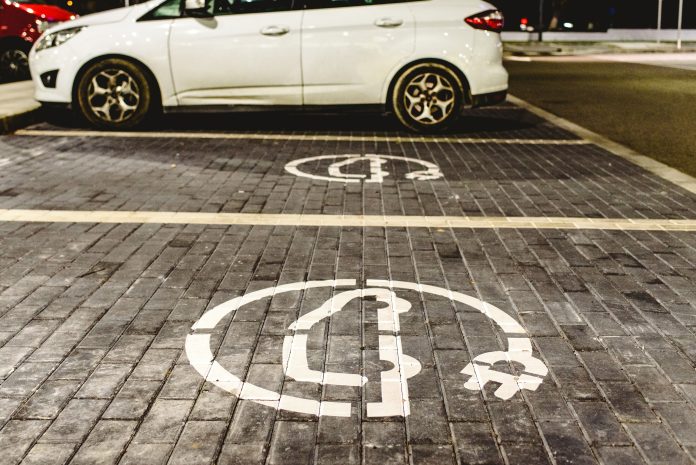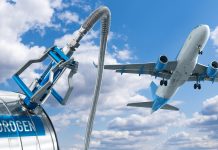Vidal Bharath, Chief Operating Officer at Bramble Energy explains why fuel cell electric transport is the answer for a truly sustainable transport sector
Progress is being made to clean up the transport sector and over the last few years, we have seen this come with more speed. Yet even with all of these developments, it is still responsible for 24% of direct CO2 emissions from fuel combustion. Road vehicles – cars, trucks, buses and two- and three-wheelers – account for nearly three-quarters of transport CO2 emissions.
With net-zero targets very quickly becoming a reality, we can no longer ignore the big questions of ‘how’ and ‘what’ is the best way to aid this sector in its complete energy transition transformation which is vital to achieving the clean energy transition. The good thing is there is more than just one solution that could deliver this transformation across applications, but just where do Battery Electric Vehicles (BEVs), Plug-in Hybrid Electric Vehicles (PHEV), fuel cells and all the rest fit into this jigsaw?
For every journey, one size does not fit all
Pure BEVs have somewhat been touted as a silver bullet to decarbonising the transport sector with the UK Government putting huge stock in their ability to decarbonise. They use mains electricity and have no tailpipe emissions which, of course, means a viable clean transport solution, but they do not represent the most optimised solution for every journey travelled.
To give perspective on just how much work the automotive industry must do before the ban on sales of new petrol and diesel passenger cars in the UK from 2030 comes into play: in 2018, before the pandemic restrictions were upon us, 808 billion passenger-kilometres were travelled in Great Britain with 83% of passenger-kilometres made by cars, vans, and taxis. And the ONS reported that by the end of 2018, only 0.5% of all vehicles licensed in the UK were ultra-low emission vehicles. This is only considering the passenger sector too. It does not take into consideration the emissions and kilometres travelled by the larger sections of the transport sector such as haulage and freight.
The UK Government has published its decarbonisation plan for transport across the country in the build-up to 2050. The main focus of this new document is a world-leading pledge to end the sale of all new, polluting road vehicles by 2040 and to achieve net-zero aviation emissions by 2050, with smart electric charging infrastructure a high priority to minimise energy bills for the end-user. The government has also moved its own target forward by three years, to have 100% of its car and van fleet zero emission by 2027. BEVs will play a major role in these decarbonisation plans, but will not be the whole picture.
The best use case and where a pure BEV makes complete sense is for those that are based in cities needing to do short trips and have easy access to a regular charging point. Even for the infrequent long journey, you can make it work with batteries, but large transportation applications and haulage of goods, as well as people, should not be turning to pure battery electrification for the answer. The answer does however lie in a hybrid solution – this is where we can look to fuel cell electric vehicles (FCEVs). When an assets up-time is its currency, we must look for a hybrid solution – still an electrified solution, but one with minimal effect on the assets value. It is here that fuel cell range extenders, which have rapid ‘recharge times’ provide the solution
The role of the fuel cell in decarbonisation
A fuel cell in short is an electrochemical device that directly converts hydrogen fuel and oxygen (taken from the air) into electricity at high efficiencies, with water as its only by-product.
In automotive applications, hydrogen fuel cells can replace or complement (range extender) an existing battery drivetrain. This means that it can provide fast refuel, zero-emission power as well as being completely silent. A hydrogen fuel cell vehicle (car, truck, bus, etc.) refuels in the typical time frame as its diesel counterpart.
We have already seen several examples of where hydrogen fuel cell vehicles are a viable solution and are ready to be implemented at scale now. There are already large fleets operating across Europe using hydrogen fuel cell vehicles and they offer a great business case, showing that zero-emission solutions exist, do not change the way transport fleets need to operate and make economic sense.
Across three major cities, we have seen the deployment of hydrogen buses. Aberdeen was the first to implement hydrogen double-deckers into their city transport fleet with fifteen buses now in service, already hitting an important 100,000 milestone. London has introduced twenty hydrogen buses to service this year and join a fleet of over 500 electric buses. The aim is to make all London buses zero-emission by 2030. Belfast have unveiled a fleet of three buses set to service the greater Dublin area. These are important integrations considering the government’s proposals in its decarbonisation strategy to reduce vehicle use, particularly in cities, improve public transport and increase support for active travel to make them the natural first choice for all who can take them.
Hydrogen fuel cell technology with the right investment behind it is only set to mature and become much more accessible to all sectors that must achieve decarbonisation goals. As with any technology, the more it is scaled the more cost will reduce and efficiency will grow. A number of large players in the automotive sector already have hydrogen fuel cell technology that they are working with. There are also smaller companies that have innovative solutions to inherent problems with fuel cell technology; these are the companies that will be able to adapt and be required to form lasting partnerships with larger entities in the future.
Even with the significant development in hydrogen fuel cell technologies and its seemingly low impact on end-user experience, the major question remains, why are we not seeing more fuel cell vehicles on the roads? Simply put, refuelling infrastructure is just not there; we go back to the age-old chicken and egg quandary, without the vehicles, there is no requirement for additional refuelling infrastructure, and without the infrastructure, why build the vehicles that no one can use?
The truth is there are currently only a handful of hydrogen refuelling stations in operation across the UK today. Compare that to the 8,000 traditional gasoline and diesel refuelling stations servicing 40 million traditionally fuelled cars, 3.3 million vans and 500,000 lorries. With similar refuelling times to petrol and diesel, we would only need to refit a handful of these existing refuelling stations with hydrogen infrastructure (as has been achieved at Gatwick, Cobham, etc.) to successfully roll out this technology. Moreover, the deployment of low thousands of hydrogen refuellers can be made in a timelier manner than required for BEV vehicles and is self-contained, and requires no driveway. We have seen this trend being adopted by the likes of Germany, California, Japan and China, all of which have deployed refuellers in no time at all. To achieve this, and become world leaders in this net-zero transportation technology, we must urge our government to courageously back it.
Blended is better
For a truly sustainable transport sector to be realised by 2050, it will inevitably need the decision-makers to take a blended approach and not pit one solution against another. The BEVs vs FCEVs argument is a waste of the time we have left to decarbonise. Understanding just where each solution is best placed to get the most optimised outcome is how the sector should be moving forward to complete the decarbonisation jigsaw.











